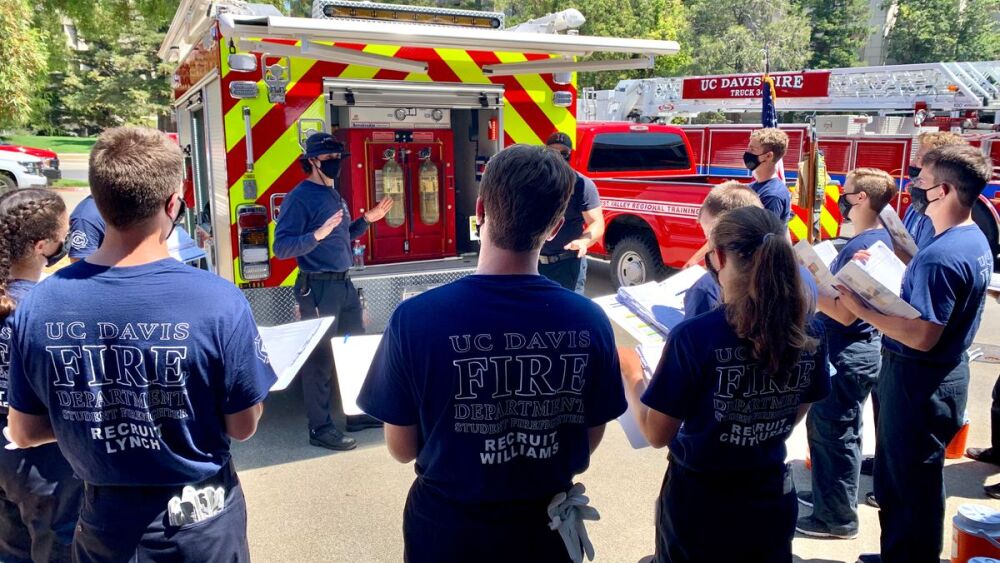The 2022 Firefighter Safety Stand Down, taking place June 19-25, focuses on the importance of situational awareness to help firefighters solve problems, prevent bad outcomes, and make better decisions in high-stress environments. This series covers how to apply situational awareness concepts to five incident types to be covered in daily focus activities: structure fires, EMS, wildland incidents, roadway response, and acts of violence.
Developing and maintaining situational awareness is a three-step process that includes:
- Perception: Gathering information about what is happening around you
- Understanding: Making sense of the information you gather
- Prediction: Anticipating future events to prevent bad outcomes
Responders use perception to gather critical clues and cues about the emergency. Some of the information is shared with responders over the radio, some of the information may come from preplans, and some of the information is gathered during the size-up. Think of the information gathered as pieces to a puzzle that responders must assemble. The assembled puzzle pieces form a “picture of understanding” that allows responders to make sense of what is happening.
The responder’s understanding drives the decision-making process. If responders shortcut this process, they may find themselves making decisions before they understand the problem that needs solving. As you can imagine, this can lead to errors in decision-making, flawed tactics and tragic outcomes.
EMS incidents
If your organization routinely responds to EMS incidents, there is a high probability this call type represents the majority of your responses. And while it may be argued that every call is unique, the repetitive and often routine nature of EMS incidents can present situational awareness challenges for responders.
While structure firefighting may arguably be the highest-risk, highest-consequence activity performed by responders, most EMS incidents (sans incidents on roadways and technical rescues) rarely put responders in a position of risk and consequence. The seemingly routine nature of EMS incidents may cause responders to lower their guard and become complacent about potential risks. The lower vigilance to surroundings, coupled with an often-elevated focus on the patient, can cause responders to miss big picture clues and cues that may signal danger.
For example, one responder I interviewed on the Situational Awareness Show, Misty Worrell, (Episodes 323 and 324) was exposed to the deadly methyl bromide gas in a home where an occupant was being intentionally poisoned with the intent to kill.
While on-scene, Worrell noted unusual circumstances and atypical behaviors from the occupants of the house, including the patient’s wife. But all of the indicators that something was wrong were “soft” clues and cues, meaning individually, the clues and cues did not combine to form a mental picture that raised any red flags for her, her partner or the engine company crew.
Similar to Worrell, three members of the Mukilteo (Washington) Fire Department were exposed to high levels of carbon monoxide on a medical response. During their interview (SAM episodes 308 and 309), they shared their story about missing soft clues and clues. On this incident, the driver was so impacted by CO poisoning that he had to stop the rig on the way to the hospital because he no longer felt safe driving.
While these two examples involve exposures to hazardous materials, this is certainly not the only risk to EMS personnel. EMS crews are also exposed to significant risks on roadways and on scenes that can become violent.
Crews can often find themselves going heads-down on EMS tasks and, and in the case of well-seasoned crews, they may perform patient assessment and treatment with little verbal communication among the crewmembers. Indeed, crews can become so accustomed to the routines of EMS care that the performance of tasks become automatic.
From numerous near-miss interviews I have conducted, a theme emerges: Various crewmembers see or hear soft clues but don’t communicate concerns to their partner. In some cases, the assumption is, “If my partner is concerned, they’ll say something.” This leads to neither partner speaking up. In some cases, senior partners, or partners with higher medical credentials, can be intimidating, which can cause the junior partner to withhold concerns.
Remember, the three-step process of situational awareness development is: Perception > Understanding > Prediction. When EMS responders fail to gather clues and cues (perception), it is near impossible for them to make sense of what is happening (understanding) and even less likely they will be able to anticipate (predict) future events in time to prevent a bad outcome.
The process for gathering the clues and cues at EMS incidents might include these questions:
- Does any of the information being shared by the communications center create a cause for concern?
- Does anything at the scene seem unusual or out of place for the type of call you responded to?
- Is there anything odd or unusual about the behavior of the patient, family members, care givers or bystanders?
- Are you sensing any tension or unrest?
- Is the crew communicating opening about concerns?
Don’t get hung up on this process for forming situational awareness at EMS incidents. This is just an example. If you have a method for critical decision-making that works better and helps you perceive, understand and predict outcomes, use it. If you think the list of questions is incomplete or should be different, change it. The important thing is to have a decision-making process rooted in situational awareness.
learn more about situational awareness
- Day 1: Situational awareness at structure fires: 4 questions to guide decision-making
- Day 3: Situational awareness at roadway incidents: Honing a defensive mindset
- Day 4: Situational awareness on wildland fires: Share the mental workload
-
Day 5: Situational awareness during acts of violence: Vigilance is key
Safety Stand Down resources for each incident type, as well as general situational awareness information, are available at the Safety Stand Down resources center.
Read next
Situational awareness: The foundation for good decision-making
The 2022 Firefighter Safety Stand Down focuses on practical applications of situational awareness, on and off the incident scene














